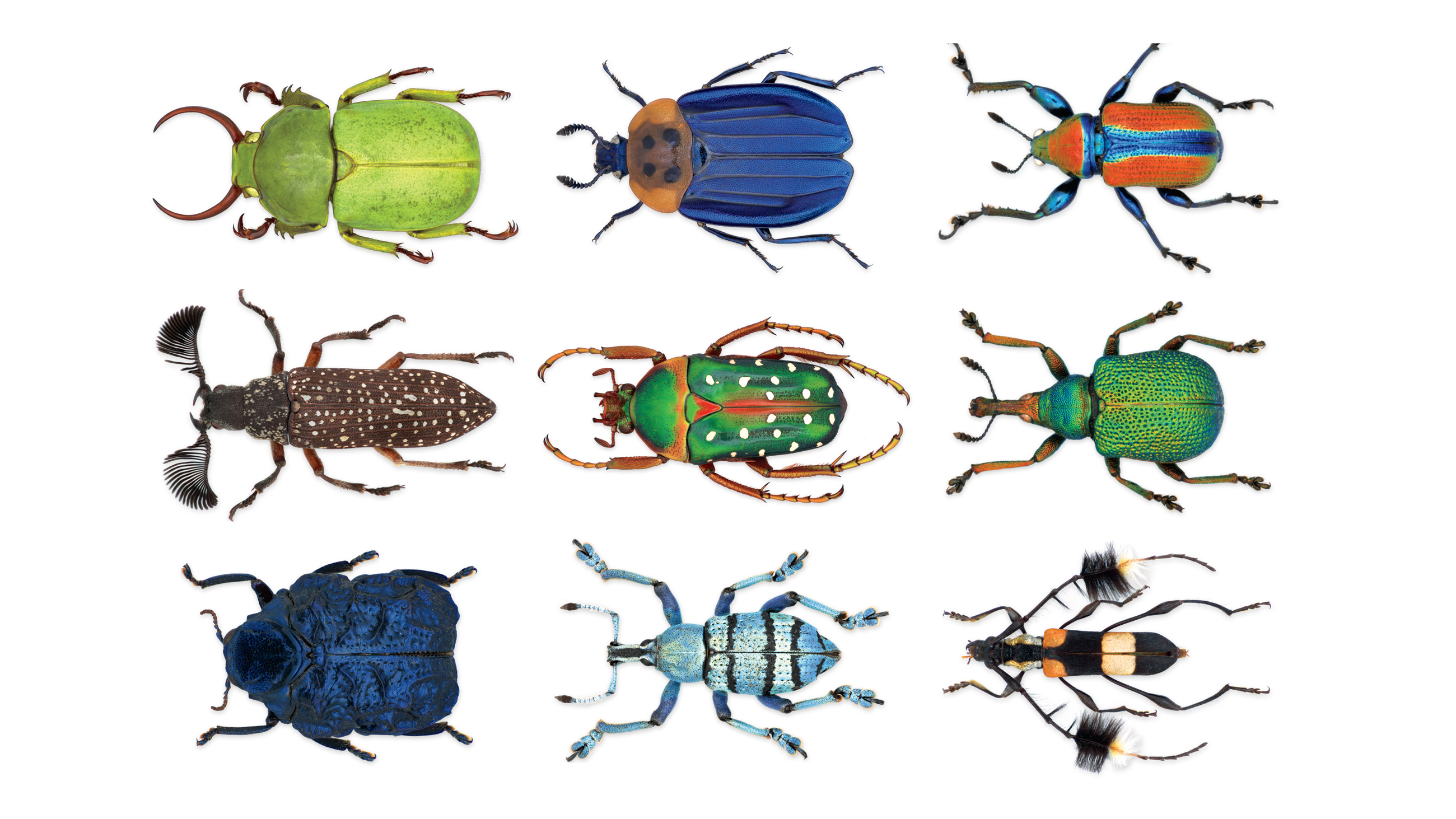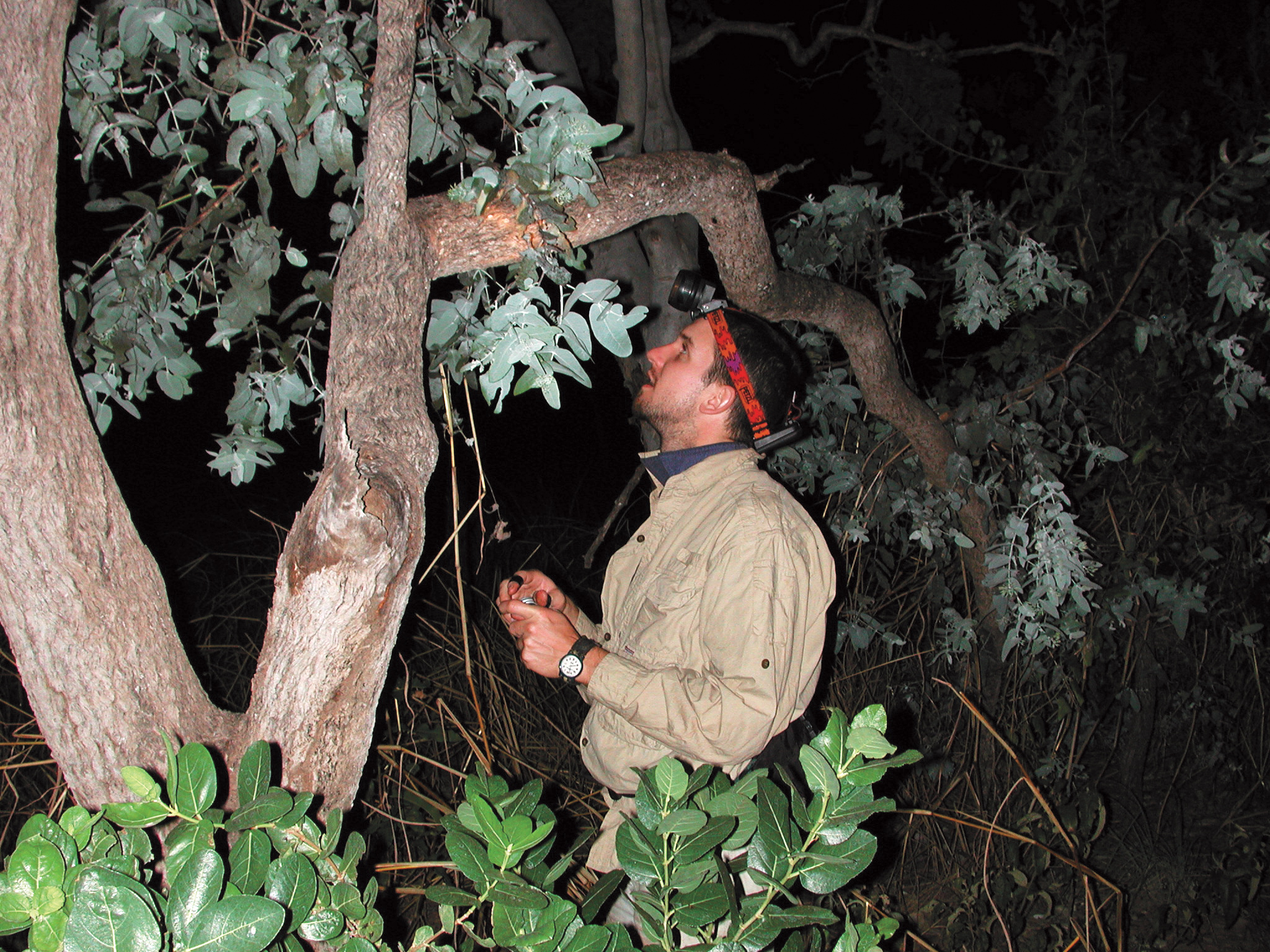
(Courtesy of Anthony Davies / Department of Agriculture and Agri-Food / Government of Canada)
Spending a few years rummaging through rotten logs in snake-infested rainforests on remote Australian mountain tops at night looking for beetles would be enough to keep some people away from insects forever.
But for Pat Bouchard, beetle curator at the Canadian National Collection of Insects, Arachnids and Nematodes in Ottawa, the adventures of Australian beetles he undertook for his Ph.D. it cemented a fascination that has endured for decades.
“There are an unlimited number of questions you can study,” says Bouchard, who, at 48, is one of the most famous beetle scientists in the world.
In part, it’s the wide variety of beetle shapes and sizes that seduces you. Beetles, also known as coleopterans, named after their taxonomic order, are the most numerous animals on Earth. Scientists like Bouchard, who study creatures, are known as coleo hunters. So far, they have named nearly 400,000 species, about a quarter of all animals known to science. For his doctoral research, Bouchard gave names to more than 40.
MORE: Insects Are People Too
The breadth of the beetles’ colors is also fascinating, from the muddy browns of some dung beetles – yes, they eat dung – to the lacquered scarlet of lily leaf beetles and the iridescent metallics of the friendly caterpillar hunter.
The smallest beetles fit through the eye of a needle. The biggest ones are bigger than a human hand. The heaviest beetle larvae weigh more than a quarter of a pound, and some fat ones, such as the larvae of the red palm weevil from Southeast Asia, are routinely broiled on skewers as snacks.
Many beetles are cute and rounded, like the ladybug. Some, like the male atlas beetle of Southeast Asia, are girded for battle with three spear-shaped horns. Others, like the bombardier beetle, release a seething stream of specific toxic chemicals from their anus when frightened. As a group, they inspire a strange worship: For ancient Egyptians, the scarab was a sacred symbol of resurrection.

Patrice Bouchard searches trees for beetles at night with a headlamp. (Courtesy of Patrice Bouchard)
Bouchard’s favorite is the Hercules beetle. Named after the muscular Greek hero, he lives in the Neotropics, from Mexico to Bolivia and throughout the West Indies. Bouchard is attracted to the exaggerated horns of the males and their enormous size, up to 17 cm, or almost seven inches.
READ: At the Calgary Zoo, camels look at people
Then there is its strange strength. Male Hercules beetles can lift almost two kilograms with their heads. In the 1990s, Rodger Kram, a scientist from California, velcroed heavy weights to the backs of some equally strong rhinoceros beetles and then ran the insects on a small motorized treadmill to see how they coped. His conclusion: the strength of the beetle is inexplicable.
What the creatures have in common, as Bouchard explains in The Book of Beetles: A Life-Size Guide to 600 Gems of Nature, which he edited for publication in 2014, is a set of front wings that have been turned into hard shells known as elytra, from the Greek word for “pod.” These shells enclose the hind wings, which fold neatly underneath. Additionally, each member of the order has chewing mouthparts, hence the common names beetle, weevil, and chafer, all of which have etymological roots in the creatures’ historical ability to bite. (The word “beetle” comes from the Middle English word “bityl” or “betyll”, which means “little bite”).
More than 8,000 different types of beetles reside in Canada “that we know of,” says Bouchard. They are so fundamental to human activity that by tracking the movements of the beetles, you can find out what the humans were doing and when. Some spread through agriculture or commerce. Others arrived in flour with the first European settlers. They love graves and excrement. Bouchard cites a fellow archaeologist who recently excavated a latrine in Quebec, only to find evidence of beetles dating back to the 1620s.
RELATED: What Does It Take to Move a Decaying Whale Carcass? Glute Strength and Vicks VapoRub.
But for Bouchard, who grew up in Quebec, the task is not just to find beetles. He belongs to that rare breed of scientists dedicated to the intricate complexities of insect nomenclature. That has led him to libraries full of ancient entomological tomes in cities around the world, as part of his work to unravel the history of the beetle names.
For example, Count Pierre François Marie Auguste Dejean, a lieutenant general who fought in the Battle of Waterloo alongside Napoleon Bonaparte, accumulated about 25,000 species and more than 118,000 individual beetles. A fan of beetles, Dejean wore pins and cork inside his helmet so that he could hold specimens to him, and he was known to stop his horse in the middle of combat to do so. He named some of his specimens, but did not follow a golden rule in zoological nomenclature: the principle of priority, which recognizes the first valid application of a name to an animal. Its naming system has confused beetle hobbyists since the 1830s, and Bouchard and his colleague Yves Bousquet are the first coleopterists to tackle the huge revision.
“He’s a very good detective,” says Adam Brunke, Bouchard’s colleague from the National Collection. “Not everyone has that ability and some people find it tedious, but it is very valuable.”
READ: How Humans and Squirrels Team Up to Collect Tree Seeds and Save the Planet
It is also a lot of hard work. In 2011, Bouchard, together with a consortium of other entomologists he assembled, published a 972-page book that compiled all the names of coleopteran family groups. David Yeates, director of the Australian National Insect Collection in Canberra, and Ph.D. by Bouchard. supervisor in the 1990s, describes it as a “gigantic scientific contribution.” For other enthusiasts, it has become the bible of the beetle.
This article appears in print in the December 2021 issue of Maclean’s magazine with the headline “Beetlemania”. Subscribe to the monthly print magazine here.
Reference-www.macleans.ca